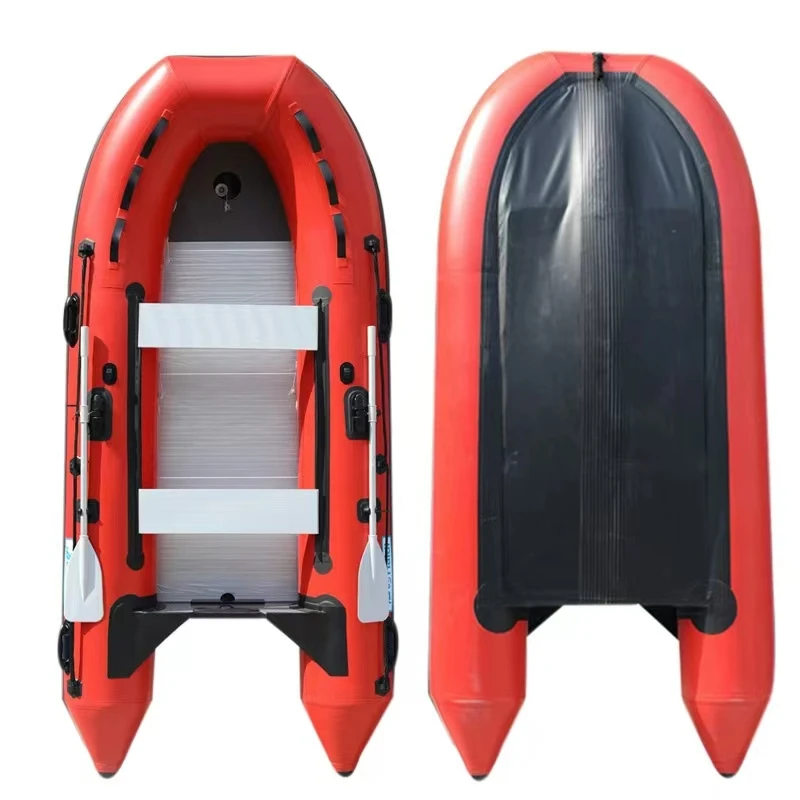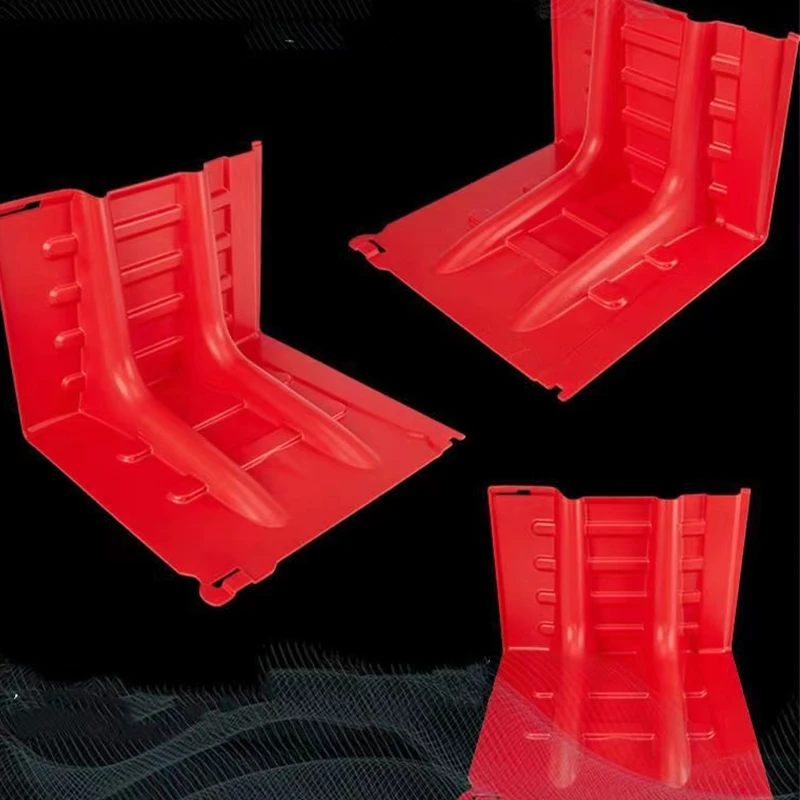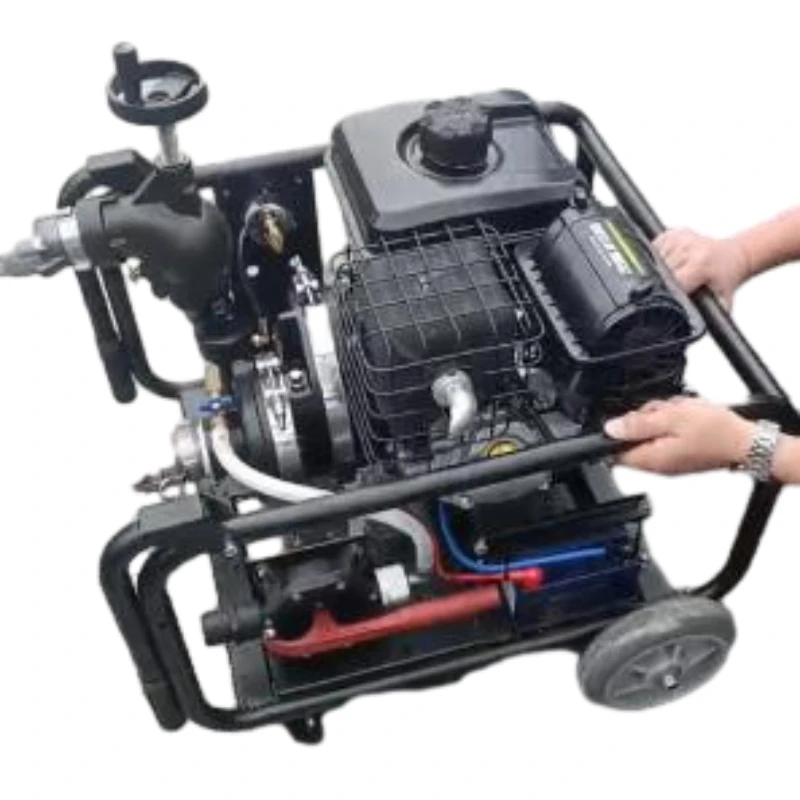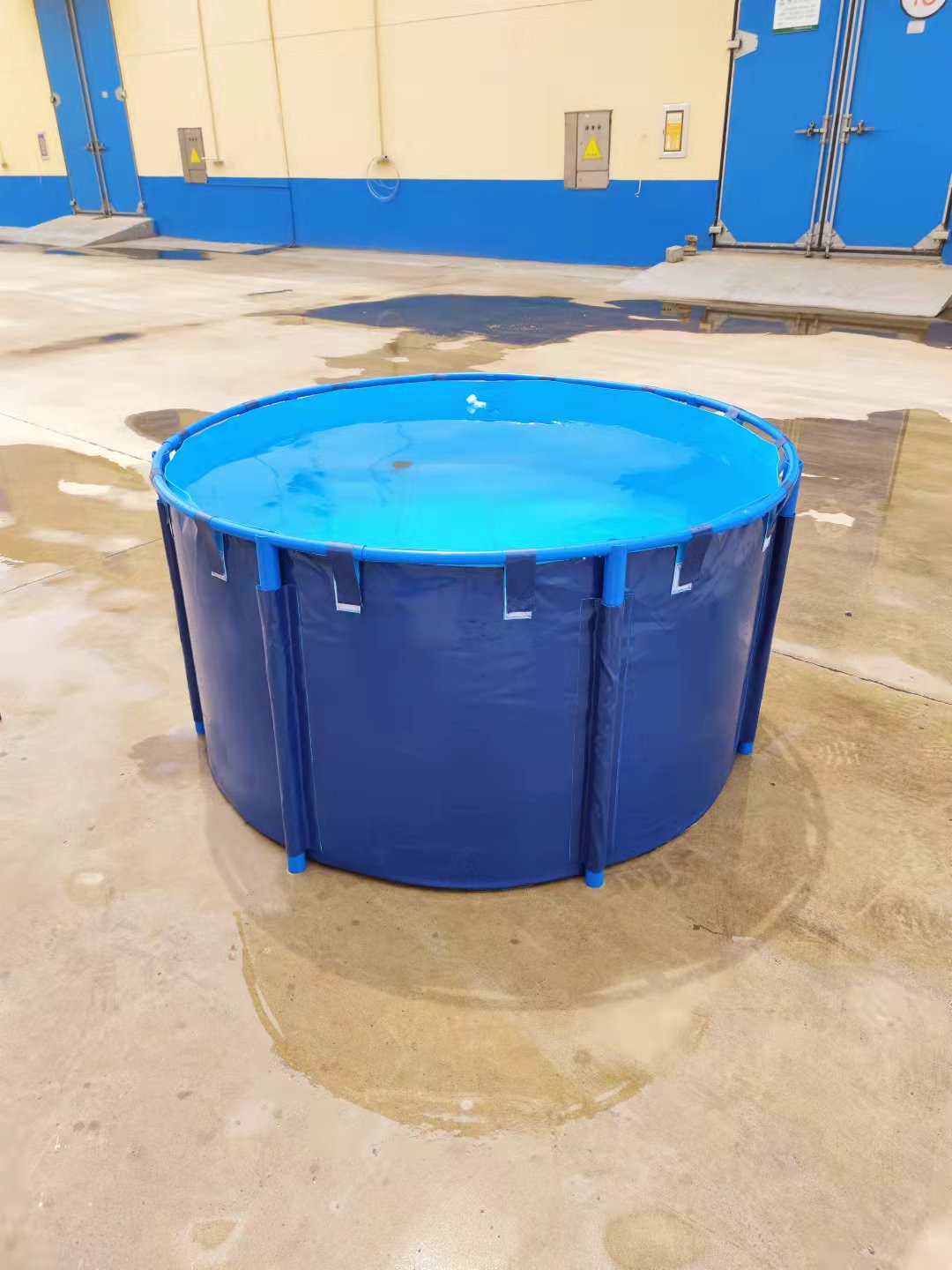Understanding the Vehicle-mounted high pressure water mist fire extinguishing device
In the realm of advanced fire suppression technologies, the Vehicle-mounted high pressure water mist fire extinguishing device stands as a critical innovation for rapid, efficient, and environmentally conscious fire control. This sophisticated system leverages the principle of high-pressure water atomization to generate microscopic water droplets, which, upon contact with flames, rapidly vaporize. This process not only extinguishes fires through cooling and oxygen displacement but also minimizes water consumption and collateral damage, making it indispensable for a wide array of industrial and emergency response applications. Its mobility and power make it a frontline defense in challenging environments where traditional methods are often insufficient or impractical.
Industry Trends and Market Dynamics
The global fire suppression market is undergoing significant transformation, driven by increasingly stringent safety regulations, a heightened focus on environmental protection, and the growing complexity of industrial hazards. Demand for mobile and adaptable fire fighting solutions is escalating, particularly in sectors such as petrochemicals, mining, forestry, and critical infrastructure. The high-pressure water mist technology segment, specifically for vehicle-mounted applications, is projected to grow at a Compound Annual Growth Rate (CAGR) of approximately 7.5% from 2023 to 2030, according to recent market analyses. This growth is primarily fueled by the technology's superior fire suppression capabilities against Class A, B, and even some Class C fires, coupled with its ecological benefits like reduced water run-off and minimal chemical residue. Innovations are continuously improving nozzle designs, pump efficiencies, and control systems, enhancing the device's operational range and effectiveness in diverse scenarios. The trend towards integrated IoT and AI for predictive maintenance and remote operation is also shaping the future of these advanced systems.

Detailed Manufacturing Process Flow
The production of a Vehicle-mounted high pressure water mist fire extinguishing device is a meticulous process, requiring adherence to strict quality control and engineering standards. It begins with raw material selection and progresses through sophisticated manufacturing stages to final assembly and rigorous testing.
- Raw Material Sourcing & Inspection: High-grade materials are selected for critical components. This includes corrosion-resistant stainless steel (e.g., SUS316L for tanks and piping) for water contact parts, specialized alloys for high-pressure pumps (e.g., hardened steel or ceramics for pump pistons), and durable polymers for seals and non-critical enclosures. All materials undergo initial inspection for composition, purity, and structural integrity, adhering to standards like ASTM A276 for stainless steel and ISO 683 for hardened steels.
-
Component Manufacturing:
- High-Pressure Pump Systems: Precision casting and forging techniques are employed to create pump housings from robust alloys. Critical pump components like pistons and cylinders are manufactured using CNC machining to achieve micron-level tolerances, ensuring optimal performance and service life (typically 15,000+ operational hours).
- Water Tanks: Fabricated from SUS316L stainless steel sheets, these tanks are meticulously welded using TIG/MIG processes, followed by passivation to enhance corrosion resistance, particularly crucial for applications in petrochemical and maritime environments.
- Nozzle Assemblies: High-pressure mist nozzles are precision-machined from stainless steel or brass, designed for optimal droplet size distribution (typically 50-200 microns) and spray patterns, critical for effective adiabatic cooling and oxygen displacement.
- Control Units & Electrical Components: Electronic control panels and interfaces are manufactured using high-quality industrial-grade components, ensuring reliability in demanding operational conditions and compliance with electrical safety standards such as IEC 61010.
- Assembly and Integration: Individual components are meticulously assembled onto a robust, vibration-dampened frame, suitable for vehicle mounting. High-pressure piping systems are installed, utilizing specialized compression fittings or orbital welding to prevent leaks under extreme pressure. Electrical systems, including power supply, controls, and safety interlocks, are integrated and tested for functionality and adherence to EMC standards.
-
Quality Control and Testing Standards:
- Hydrostatic Testing: All pressure vessels and piping undergo hydrostatic testing at 1.5 times the maximum working pressure, as per ASME Boiler and Pressure Vessel Code, ensuring structural integrity.
- Operational Performance Testing: The complete system is tested for pump efficiency, discharge pressure, flow rate, and mist pattern integrity. This includes simulating various fire scenarios to validate extinguishing capabilities against relevant standards like NFPA 750 (Standard for Water Mist Fire Protection Systems) and EN 14972.
- Vibration and Shock Testing: To ensure durability for vehicle-mounted applications, units are subjected to vibration and shock tests conforming to ISO 16750 or equivalent automotive industry standards.
- Corrosion Resistance Testing: Salt spray tests (ASTM B117) are conducted on external components and treated surfaces to confirm their resilience in harsh environments.
- Final Inspection and Certification: Each Vehicle-mounted high pressure water mist fire extinguishing device undergoes a final comprehensive inspection. Certification is obtained from recognized bodies (e.g., ISO 9001 for manufacturing quality, CE marking for European conformity, and potentially specialized certifications like ATEX for explosive atmospheres if applicable).
The rigorous process ensures a product with an extended service life (typically 15-20 years with proper maintenance), offering superior energy saving through efficient water use and unparalleled corrosion resistance critical for target industries like petrochemicals, metallurgy, and water supply & drainage.
Technical Specifications and Parameters
The performance of a Vehicle-mounted high pressure water mist fire extinguishing device is defined by a precise set of technical specifications that govern its effectiveness and reliability. These parameters are crucial for engineers and procurement specialists when evaluating suitable solutions.
| Parameter | Specification | Unit/Description |
|---|---|---|
| Operating Pressure | 100 - 200 | Bar (1450 - 2900 psi) |
| Water Flow Rate | 20 - 60 | Liters/Minute (LPM) |
| Water Tank Capacity | 500 - 2000 | Liters (customizable) |
| Throw Range (Mist) | 15 - 30 | Meters |
| Droplet Size Distribution | D(v,0.5) 50-200 | Microns (µm) |
| Operating Temperature | -20 to +50 | °C (with antifreeze option) |
| Power Source | Vehicle PTO / Dedicated Diesel Engine | |
| Pump Type | Triplex Plunger Pump | Ceramic/Stainless Steel |
| Material Construction | Stainless Steel (SUS304/316L) | Frame, Tank, Piping |
| Control System | Manual & Remote (Wireless) | Option |
| Certifications | ISO 9001, CE, NFPA 750 (design compliant) |

Application Scenarios and Target Industries
The versatility and mobility of the Vehicle-mounted high pressure water mist fire extinguishing device make it suitable for a diverse range of critical industries and emergency situations. Its rapid deployment capability and efficient fire suppression properties address unique challenges in various sectors.
- Petrochemical and Oil & Gas Facilities: Rapid response to hydrocarbon fires, minimizing the risk of explosions and environmental contamination. The fine mist reduces flammable vapor concentrations and provides rapid cooling for tanks and structures.
- Metallurgy and Heavy Manufacturing: Effective against metal fires (e.g., magnesium, titanium, when specialized additives are used), dust explosions, and fires involving machinery. Its low water usage prevents thermal shock to sensitive equipment.
- Forestry and Wildland Firefighting: Excellent for remote access, creating fire breaks, and direct attack on wildfires. The efficient water usage extends operational time in areas with limited water resources.
- Mining Operations: Suppression of conveyor belt fires, vehicle fires in underground or open-pit mines, and dust fires where water damage must be minimal.
- Urban Emergency Response: Ideal for rapid intervention vehicles, tackling fires in confined spaces, high-rise buildings (via external attack), and reducing smoke and heat quickly, improving conditions for rescue teams.
- Power Generation and Utilities: Protecting electrical substations, transformer fires, and server rooms where water damage from conventional sprinklers would be catastrophic. The water mist is non-conductive when properly applied.
In each scenario, the device's ability to provide superior cooling, oxygen displacement, and radiation attenuation with minimal water volume stands as a distinct advantage, demonstrating its capacity for energy saving and environmental stewardship.
Technical Advantages
The core strength of a Vehicle-mounted high pressure water mist fire extinguishing device lies in its advanced technical advantages, differentiating it from conventional fire suppression systems:
- Superior Fire Suppression Efficiency: High-pressure atomization creates micro-droplets (typically less than 200 µm). These droplets have a vast collective surface area, allowing for extremely rapid heat absorption through vaporization (adiabatic cooling). The volumetric expansion ratio of water to steam (approximately 1:1700) effectively displaces oxygen around the fire, disrupting the combustion triangle.
- Minimal Water Consumption: Due to its high efficiency, water mist systems use significantly less water compared to traditional sprinklers or foam systems. This translates to reduced water damage, less run-off, and extended operational time with onboard water supplies, crucial for remote areas. This also highlights its energy saving benefits by reducing the need for large water pumps and extensive water transport.
- Reduced Collateral Damage: The fine mist minimizes thermal shock to structural elements and sensitive equipment, making it ideal for protecting valuable assets and data centers where water damage is a primary concern.
- Environmental Friendliness: Using pure water as the extinguishing agent eliminates harmful chemical residues and the need for hazardous waste disposal, aligning with modern environmental regulations.
- Rapid Smoke and Heat Abatement: The rapid cooling effect also precipitates smoke particles and significantly reduces ambient temperatures, improving visibility and safety for responders.
- Corrosion Resistance and Durability: Constructed with high-grade stainless steel and robust components, these devices exhibit exceptional corrosion resistance, ensuring long-term reliability and minimal maintenance, especially in harsh industrial environments or coastal regions.
- Versatile Fire Class Coverage: Effective on Class A (solids), Class B (flammable liquids), and in specific configurations, even Class C (electrical) fires due to the non-conductive nature of demineralized water mist and quick de-energization.
Vendor Comparison: Evaluating High-Pressure Water Mist Systems
Choosing the right Vehicle-mounted high pressure water mist fire extinguishing device vendor requires a critical evaluation of system performance, reliability, and support. Below is a comparative overview highlighting key differentiators.
| Feature/Vendor | Leading Vendor (FFW Fire Safety) | Competitor X (Example) |
|---|---|---|
| Operating Pressure | Up to 200 Bar (3000 psi) | Typically 120-150 Bar |
| Water Flow Rate (Max) | 60 LPM | 40 LPM |
| Droplet Size Distribution | D(v,0.5) 50-150 µm (Optimized) | D(v,0.5) 150-250 µm |
| Water Tank Material | SUS316L Stainless Steel | SUS304 Stainless Steel or Reinforced Polymer |
| Pump Type & Material | High-Efficiency Triplex Plunger (Ceramic/Hardened Steel) | Standard Triplex Plunger (Stainless Steel) |
| Certifications/Compliance | ISO 9001, CE, NFPA 750 (design compliant), Maritime (Optional) | ISO 9001, CE |
| Customization Options | Extensive: Tank size, power, nozzle types, remote controls, additives, vehicle integration. | Limited: Basic tank sizes, standard nozzles. |
| Warranty | 2 Years Standard, Extendable | 1 Year Standard |
| Estimated Service Life | 15-20+ Years | 10-15 Years |
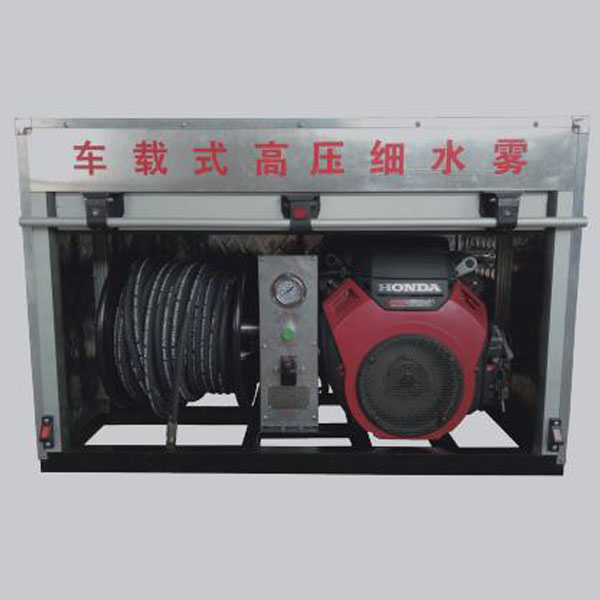
Customized Solutions and Partner Clients
Recognizing that every operational environment presents unique challenges, FFW Fire Safety excels in delivering highly customized Vehicle-mounted high pressure water mist fire extinguishing device solutions. Our engineering team collaborates closely with clients to develop systems that seamlessly integrate with specific vehicle platforms, operational requirements, and target hazard profiles. Customization options include:
- Vehicle Integration: Tailored mounting solutions for light utility vehicles, heavy-duty trucks, ATVs, and specialized industrial equipment. This includes PTO-driven or independent engine-driven pump configurations.
- Water and Additive Tank Configurations: Varying capacities and the inclusion of foam or specialized wetting agent injection systems for enhanced performance on specific fire classes (e.g., Class B hydrocarbon fires).
- Nozzle and Lance Selection: A wide array of nozzle types (e.g., fog, direct jet, oscillating) and extendable lances to reach difficult fire locations, including remote-controlled monitor nozzles.
- Advanced Control Systems: Integration with vehicle's existing telemetry, remote control operation via wireless systems, and advanced diagnostic interfaces for real-time monitoring.
- Environmental Hardening: Options for extreme temperature operation (heating elements for cold climates, enhanced cooling for hot climates), dust protection, and increased vibration dampening for rough terrain.
Our commitment to authoritative standards and client satisfaction is reflected in our partnerships with leading enterprises across various sectors. For over 20 years, we have provided critical fire safety solutions to major petrochemical corporations, national forestry services, urban fire departments, and large-scale manufacturing plants, demonstrating a proven track record of reliability and performance. Our systems are frequently deployed by emergency services that prioritize rapid, efficient, and environmentally responsible fire suppression.
Application Case Studies
The real-world application of the Vehicle-mounted high pressure water mist fire extinguishing device underscores its effectiveness and strategic value.
- Case Study 1: Petrochemical Plant Emergency Response
A major petrochemical facility in the Gulf Coast region experienced a localized leak and subsequent ignition in a processing unit. Due to the volatile nature of the materials, traditional water jets posed risks of spreading the fire. Our custom-designed vehicle-mounted high-pressure water mist system, integrated onto a rapid response truck, was deployed. The fine mist quickly cooled the surrounding infrastructure, suppressed the flame front by displacing oxygen, and safely brought the temperature down for foam application on the residual spill. The incident was contained in under 15 minutes, significantly reducing potential damage and downtime, with minimal water usage. Customer feedback praised the rapid deployment and minimal environmental impact. - Case Study 2: Wildland-Urban Interface Fire in California
During a challenging wildfire season, a residential area bordering a national forest was threatened by fast-moving brushfires. Local fire authorities deployed several light utility vehicles equipped with our Vehicle-mounted high pressure water mist fire extinguishing device. These agile units could navigate narrow forest paths and rapidly establish defensive perimeters. The efficient water consumption allowed extended operations without frequent refills, protecting multiple homes and structures that would have otherwise been engulfed. The system's ability to create a "wet blanket" ahead of the fire front proved invaluable. - Case Study 3: Underground Mining Vehicle Fire
An excavator caught fire deep within an underground coal mine, presenting significant ventilation and access challenges. A specialized mining vehicle, fitted with our high-pressure water mist system, was dispatched. The mist rapidly knocked down the flames and cooled the engine compartment, preventing reignition and minimizing toxic smoke generation. The low water volume prevented adverse effects on the mine structure and ground stability. The rapid response averted a potentially catastrophic incident, and the client commended the system’s effectiveness in such a confined and hazardous environment.
Trustworthiness and Support
Building long-term partnerships through unparalleled reliability and dedicated support is a cornerstone of our operations. We ensure the highest levels of trustworthiness through transparent processes and robust customer-centric services.
Frequently Asked Questions (FAQ)
- Q: Is water mist effective against all fire classes?
A: High-pressure water mist is highly effective against Class A (solid combustibles) and Class B (flammable liquids) fires. With appropriate additives and specialized configurations, it can also be effective against certain Class C (electrical) fires, provided power is de-energized. It is generally not recommended for Class D (combustible metals) without specialized agents. - Q: How does the system handle cold weather operations?
A: Our systems offer optional antifreeze solutions or integrated heating elements for water tanks and piping to ensure reliable operation in sub-zero temperatures down to -20°C or lower. - Q: What is the typical lead time for a customized system?
A: Lead times vary based on customization complexity. For standard configurations, typically 8-12 weeks. Highly customized systems may require 12-20 weeks, including design, manufacturing, testing, and delivery. We provide detailed project timelines upon consultation.
Warranty and After-Sales Support
We offer a comprehensive 2-year warranty on all components and workmanship for our Vehicle-mounted high pressure water mist fire extinguishing device, with options for extended service agreements. Our commitment to client success extends far beyond delivery, encompassing:
- Technical Assistance: 24/7 remote and on-site technical support from certified engineers.
- Preventative Maintenance Programs: Tailored service plans to ensure optimal system performance and longevity.
- Spare Parts Availability: Guaranteed access to genuine spare parts and consumables for the entire service life of the product.
- Operator Training: Comprehensive training programs for client personnel on system operation, basic maintenance, and safety protocols.
Conclusion
The Vehicle-mounted high pressure water mist fire extinguishing device represents the pinnacle of mobile fire suppression technology, offering an effective, efficient, and environmentally responsible solution for a myriad of industrial and emergency scenarios. By combining cutting-edge engineering with robust manufacturing processes and dedicated customer support, FFW Fire Safety provides systems that are not just compliant with the highest industry standards but are designed to exceed operational expectations in the most demanding environments.
References
- NFPA 750: Standard for Water Mist Fire Protection Systems. National Fire Protection Association, 2023 Edition.
- ISO 9001: Quality management systems – Requirements. International Organization for Standardization, 2015 Edition.
- ASME Boiler and Pressure Vessel Code (BPVC) - Section VIII, Division 1: Rules for Construction of Pressure Vessels. American Society of Mechanical Engineers.
- Wang, Y., & Li, R. (2020). Advances in High-Pressure Water Mist Fire Suppression Technology. Journal of Fire Protection Engineering, 30(2), 123-145.
- Market Research Reports Inc. (2023). Global Fire Suppression Systems Market Analysis, 2023-2030.









